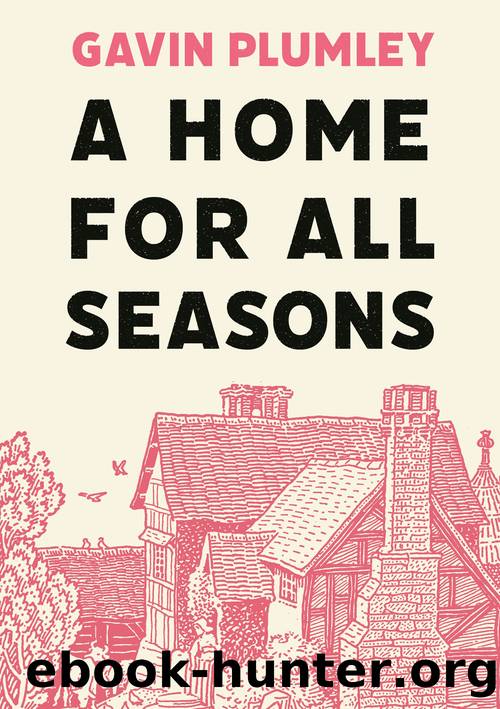A Home for All Seasons by Gavin Plumley

Author:Gavin Plumley [Plumley, Gavin]
Language: eng
Format: epub
Publisher: Atlantic Books
Far from the gaiety of the capitalâs frost fairs, isolated market towns such as Pembridge were at risk of being cut off entirely. As Woolf stresses, the long, hard winters of the late 1500s and early 1600s brought absolute devastation to livestock. In a similarly remote Devonshire village called Morebath, the focus of a pioneering study by Eamon Duffy, an annual sheep count of the period records animals âlost and goneâ, âdrownedâ in nearby swollen streams and rivers or âlost at crystmasâ. But human selection also came into it, as many villagers, particularly husbandmen, realized they couldnât afford to feed their flocks during the winter months. It made for tough choices, given the (admittedly fetid) warmth that sheep and cattle offered a farming household â the animals of The Return of the Herd are notably absent in The Hunters in the Snow, perhaps having been brought indoors. And the flooding that claimed the lives of the sheep of Morebath â and no doubt Pembridge, with the swollen River Arrow during the darker half of the year â also created environments in which epidemics thrived among humans and animals, exacerbating comparatively poor levels of sanitation, even if the countryside was, on the whole, healthier than the city.
The death of livestock, the flooding of land and the plummeting temperatures all triggered falling levels of natural fertilizer too, which made for even poorer harvests come the following summer. By reversing the trend of enclosure in some areas, there was increased land given to common arable farming to compensate for the loss, though this proved more labour-intensive and provided even less space for the pasturing of sheep and cattle, which prompted yet more slaughter. And it wasnât only during winter that these problems became apparent. The wet summers of the Little Ice Age did nothing to help the process.
⢠⢠â¢
WHILE TODAYâS citizens in Pembridge are spared most of these indignities, even if flooding remains a significant problem for farmers in the Arrow Vale and many a winter shoot going into The New Inn looks rather thin on birds shot and retrieved, there is one phenomenon that the villageâs current inhabitants share with their predecessors: SAD, seasonal affective disorder. The affliction may reflect generally poor mental health, but it is (and was) worsened by the onset of winter. Depression, indolence, inactivity and, for me certainly, the craving of carbohydrates and melted cheese â and subsequent weight gain â have been the hallmarks of many black ends of the year. I have a particular loathing for November.
A complex condition, SAD is directly linked to the absence of light during the winter months. The hormone melatonin, created by the pineal gland, is released at night and provides an internal signal of darkness. Exposure to light resets melatoninâs circadian rhythm and inhibits its synthesis. During winter, the bodyâs rising and more prolonged levels of melatonin prompt sleepiness, while, at the same time, falling levels of serotonin, linked to mood and appetite, as well as sleep patterns, combine
Download
This site does not store any files on its server. We only index and link to content provided by other sites. Please contact the content providers to delete copyright contents if any and email us, we'll remove relevant links or contents immediately.
| Appetizers | Christmas |
| Halloween | Holidays |
| Jewish | Party Planning |
| Seasonal | Tablesetting |
| Thanksgiving |
The French Women Don't Get Fat Cookbook by Mireille Guiliano(3604)
Better Homes and Gardens New Cookbook by Better Homes & Gardens(3524)
Al Roker's Hassle-Free Holiday Cookbook by Al Roker(3498)
The Warrior by Kinley MacGregor(2968)
Oh She Glows Every Day by Angela Liddon(2726)
My Pantry by Alice Waters(2542)
Veg by Jamie Oliver(2408)
Claridge's: The Cookbook by Nail Martyn & Erickson Meredith(2359)
Cocktails for the Holidays by Editors of Imbibe magazine(2080)
Vegan Desserts by Hannah Kaminsky(2031)
Downtime by Nadine Levy Redzepi & Rene Redzepi(2007)
The I Quit Sugar Cookbook by Sarah Wilson(2001)
Chefs & Company: 75 Top Chefs Share More Than 180 Recipes To Wow Last-Minute Guests by Isabella Maria(2000)
2250 Pressure Cooker, Crock Pot, Instant Pot and Slow Cooking Recipes Cookbook: (Crock-Pot Meals, Instant Pot Cookbook, Slow Cooker, Pressure Cooker Recipes, Slow Cooking, Paleo, Vegan, Healthy) by Jamie Stewart(1952)
Whiskey in a Teacup by Reese Witherspoon(1935)
Salad Days by Pam Powell(1911)
Simple Gatherings by Melissa Michaels(1855)
Fabulous Party Cakes and Cupcakes by Carol Deacon(1801)
Italian Kitchen Garden by Fraser Sarah(1674)
